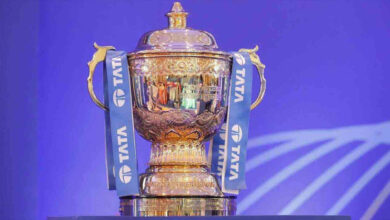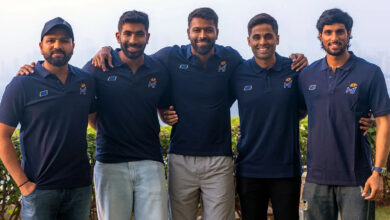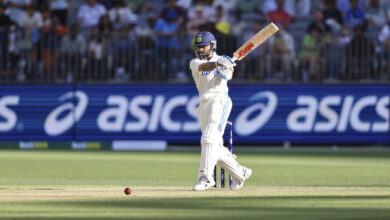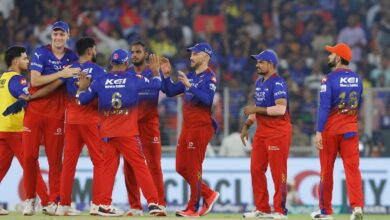Weekly Sports Newsletter: Hardik Pandya, Sachin Tendulkar and the perks of being the youngest in family

There is an endearing old video of the Pandya brothers on YouTube in which they take liberties with each other like only siblings can. Krunal comes across as the quintessential earnest elder brother to Hardik, the seemingly over-indulged and spoiled silly ba of the family.
Towards the end of the Breakfast with Champions show, the more successful younger brother – slouched on a chair, a thick silver chain hanging out of the hoodie, half-shaved head shouting to notice the hipster in him – expresses his pet peeve about his bhai.
“Everything is a joke to him when I talk to him. He is never serious, always laughing,” Hardik complains to host Gaurav Kapur. Replace Kapur with their mother and it could well be every other day at the Pandya household.
Hardik’s cry to be taken seriously makes the other laugh. Krunal ends the conversation like only Big Brothers can. He looks at the anchor and says, “Dekho isko jara dhyan se, isse serious baat kar sakte hain (Just look at him, how can I take him seriously)?”
Kapur and Krunal are in splits. Hardik goes in a mock sulk. With a half-smile, he gets busy, picks his sleek aviators from the table and starts wiping them with the loose end of his three-quarters surfers’ pants.
Lening to Krunal would make most of the cricketing world feel a shade less guilty about not taking Hardik Pandya, the Gujarat Titans captain, seriously at the start of this IPL season. No one gave the new franchise or its captain, whose only previous leadership experience was leading a state u-16 team, any chance.
April end, with the Titans squatting at the top of the table, opinions were changing. But those getting credit were the men in the dugout – World Cup-winning coach Gary Kirsten and Ashish Nehra’s remote-control coaching style from the boundary.
In May, even the critics couldn’t attribute the Titans’ streak to beginner’s luck. Now post-match shows were about Hardik’s smart bowling changes, his insence on attacking fields to greet new batsmen started getting noticed.
And when the news came in that all-rounder Ben Stokes would be England captain, Hardik seemed to have been cut from a fabric that had the feel of captaincy material.
Meanwhile, Krunal continued to be the nuts-and-bolts cricketer, the one among the many IPL foot-soldiers. Post their Mumbai Indians non-retention, while the elder one has held on to his status as a mid-level player, the stock of the ba brother has sky-rocketed. That’s been the story of their lives.
The career paths of the Pandya brothers is another piece of anecdotal evidence that highlights an intriguing sporting culture that needs the attention of a seasoned sociolog. Across continents, in different strata of societies, there have been stories of younger siblings outshining the elder.
Sachin Tendulkar, Virat Kohli, Sourav Ganguly, Mohammad Kaif and Wasim Jaffer are some of the youngest, who were also the smartest. Beyond the cricket field, it’s a staggering l: Serena Williams, Usain Bolt, Michael Jordan, Steve Redgrave, Michael Phelps, Megan Rapinoe.
In her book Mind Games, world champion British rower Annie Vernon talks about the curse of being the first-born. Like all path-finders, with no role models to look up to, they are burdened with complex trial-and-error compulsions. In most cases, the elders end up being the sherpas and pace-setters to their summit-conquering younger siblings.
Vernon writes: “The first-born sibling is self-referencing, and has nobody to compare themselves against. Younger siblings are constantly interacting with somebody who is slightly faster, higher and stronger than them … Studies suggest that first-born children are motivated to learn while younger siblings are motivated to win.”
All in the family
Families with sporting culture also learn life lessons and with time, make more right decisions. Having walked the pathway, they are aware about the complex tws and turns – the coaches to avoid, the people to trust and doors to knock.
At Professor Ramesh Tendulkar’s home at Mumbai’s Sahitya Sahawas, the first one to get serious about cricket was Ajit. And had it not been for the club-cricketer elder sibling in the family, young Sachin may well have spent most of his childhood plucking mangoes from the trees on Sunday evenings when Doordarshan beamed feature films.
Ajit knew the Mumbai maidans well. He was sure that there was no place like Shivaji Park and no coach like Ramakant Achrekar to guide his gifted ba brother. Till his last game, Ajit would sit and pore over every stroke his brother hit. As Sachin told The Indian Express recently, “Even after my final international inning, he wanted to discuss the way I got out.” Not everyone is blessed with a life-long coach who has your back for life.
Unlike Professor Tendulkar, Tarif Mohammad was a Ranji Trophy regular with three passionate cricketer sons. It was the combined wisdom of the three that helped the youngest reach dizzy heights first as a junior and later as a Team India regular. It is said that Tarif, not too pleased with the way his first two sons’ careers had panned out, drafted Kaif into the Kanpur Sports Hostel and not the one at Lucknow. Kaif, till date, is indebted to his alma mater for making him the first from Uttar Pradesh to be a regular Team India player.
Like Kaif, all-time great basketballer Michael Jordan too had two elder brothers. Unlike the Kaif and Tendulkar households – where there was bonhomie between brothers – MJ grew in a highly-competitive environment. They were of similar age thus the rivalry.
“I don’t think I would be here without the confrontations with my brother. When you come to blows with someone you absolutely love, that’s igniting every fire within you. And I always felt like I was fighting Larry (brother) for my father’s attention,” Michael says in the documentary The Last Dance.
The Pandya Der. Bhai-valry Returns!
What we 💟 about the Pandya Brothers is that they never stop dreaming! Before the face-off tonight, we made them share their fascinating journey once again!#SeasonOfFirsts #AavaDe #AbApniBaariHai #BhaukaalMachaDenge #LSGvGT @LucknowIPL pic.twitter.com/zjBWcQ3s5o
— Gujarat Titans (@gujarat_titans) May 10, 2022
The Pandyas, just three years apart, too were competitive from an early age. Like Venus Williams, Krunal was the chosen one. It was for his cricket that the Pandyas moved from Surat to Baroda, the city with a better cricket culture. Hardik was just three then, nothing more than a hanger-on at Krunal’s training hours. The family budget made their journey more arduous. The boys hitched rides, Hardik surviving on Maggi noodles is part of Indian cricket’s folklore now.
Running parallel to King Richard’s script, and like Serena overtook Venus, in the Pandya household too, the younger one prevailed. The brothers joke about that too. Hardik says looking at his elder brother. “I had no expectations from him. But somehow, he ended up playing (for India).”
There’s a theory for that too. In The Guardian, MIT econom Joseph Doyle gives his take on siblings. “The first-born has role models who are adults. And the second, later-born children have role models who are slightly irrational two-year-olds.”
It seemed just right for the Pandyas, and they still can’t believe how far they have come. As Krunal says, “The other day we were at home having popcorn, and I told Hardik ‘yaar hum toh amir ban gaye (Bro, we have become rich).”
Send your feedback to sandydwivedi@gmail.com
Sandeep Dwivedi
National Sports Editor
The Indian Express







